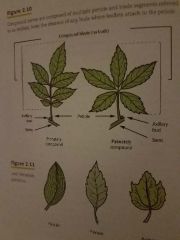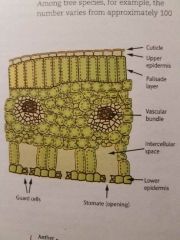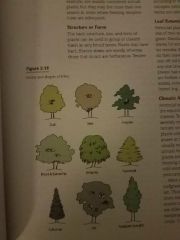![]()
![]()
![]()
Use LEFT and RIGHT arrow keys to navigate between flashcards;
Use UP and DOWN arrow keys to flip the card;
H to show hint;
A reads text to speech;
21 Cards in this Set
- Front
- Back
|
Horticulture |
Fundamental principles of plant physiology and botany combined with skill and intuition in employing them to ensure best use and enjoyment of plants |
|
|
Botany |
Study of plants |
|
|
Agronomy |
Includes crops such as corn, wheat, rice, alfalfa and other grains and forages usually grown on large scsle with less intensive management than horticulture, whereas horticulture is specialized involving intensive management |
|
|
Plant characteristics |
Determined by genetic potential/traits with environment. Horticulturists employ scientific methods to investigate and understand plant responses to various environmental conditions, then develop and employ |
|
|
Plants |
No consciousness or mobility. Living factory that produces own food and serve directly or indirectly ad the source of food and support for nearly all other living organisms. Foof produced through photosynthesis. Regenerates certain lost or dsmaged orgsns snd tiddies snd posses rigid cell walls made mostly of cellulose |
|
|
Leaves |

Collect sunlight and conduct photosynthesis. Chlorophyll, under the upper epidermis, is the green pigment necessary in photosynthesis |
|
|
Internal structure of a leaf in cross structure |

Cuticle, upper epidermus, palisade layer, vascular bundle, intercellular space, lower epidermus guard cells, stomate (opening) |
|
|
Shapes of trees |

Oval, vase, irregular, broad & soreafinf, weeping, pyramidsl, columnar, fan, fastgiate (upright) |
|
|
IPM |
Integrated Pest Management: www.ipm.ucdavis.edu |
|
|
UCANR |
Division of Agriculture and Natural Resources: www.ucan.edu |
|
|
CISR |
Center for Invasive Species Reseach. at UC Riverside |
|
|
UC Statewide Master Gardener Program |
Mg.ucanr.edu. local, Master Gardener Association of San Diego County (MGASDC) |
|
|
UCCE San Diego County Web Site |
www.cesandiego.ucanr.edu |
|
|
Taproot |
A stout, tapering main root from which arise smaller lateral roots. Potted plants seldom develop a tsproot system. Taproots diminish in size as the plant matures |
|
|
Meristems |
Plant tissue-cells that develop new tissue. Common types are apical (terminal) and lateral. Terminal is fiund in shoot tips, root tips, and buds,. Apical meristema responsible for increased length. Growth of lateral is called cambium. Grass: Shoot growth is near the base which is why mowing at the right height does not remove the growing part of the grass. |
|
|
Variety |
Subclassification if a species in which plants growing in the eild develop and possess some minor but important morphological trait that is readily heritable. Cultivated variety is when propagated and then cultivated. |
|
|
Monoecious |
Of a plant or invertebrate animal having both male and female reproductive organs in the same individual; hermaphrodite. |
|
|
Plant respiration |
During respiration plants absorb free molecules of oxygen (O2) and use them to create water, carbon dioxide. and energy which helps the plant grow. Respiration is one of the ways carbon dioxide is produced. The carbon dioxide that is produced is absorbed by plants in photosynthesis. Respiration occurs 24 hrs a dsy but photosynthesis must occur at a rate that greatly exceeds respiration so thst enough storrd energy and carbohydrstes are avsiablr ti support nighttime respiration and other growth and development processes. An unbalance nmbetween the two can cause plant stress or worse death |
|
|
Plant transpiration |
Evaporative loss of water vapor from plant leaves through the stomata, is closely related to the translocation of water and dissolved minerals from the roots through the xylem. Dependent upon water pulled like a thread from the roots to tbe top of the plant. |
|
|
Plant hormones-5 major groips |
Gibberellins, auxins, cytokinins, ethylene, and abscisic acid |
|
|
Flowering plants/angiosperms |
Divided into 2 main 9classes |

